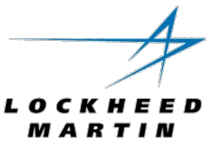Hennepin Life Sciences Presents Pre-Clinical Data Showing Anti-Microbial Activity Of Glycerol Monolaurate In Preventing And Treating Catheter-Associated Urinary Tract Infections
NEW ORLEANS, June 5, 2017 /PRNewswire/ -- Catheter-associated urinary tract infections (CA-UTI) account for one of the top four healthcare costs in the United States.(1) Hennepin Life Sciences today announced the presentation of pre-clinical data demonstrating that glycerol monolaurate (GML), a broad-spectrum topical gel with bactericidal activity against pathogenic bacteria, eradicates multi-drug resistant urinary tract infection bacteria in vitro and in vivo. The data were presented at the American Society for Microbiology's Microbe meeting in New Orleans, June 1-5, 2017. An abstract of the poster presentation can be found online at www.asm.org.
GML is a fatty acid monoester that is commonly used as an emulsifier and preservative in the cosmetic and food industries.(2) When GML is combined with a non-aqueous gel, it becomes broadly antimicrobial against pathogenic bacteria, include ESKAPE pathogens which are the large group of bacteria that cause urinary tract infections (UTIs), sepsis and other hospital-associated infections. GML has been shown to have anti-inflammatory activity in tissue culture and in vivo at host mucosal surfaces, which reduces infection establishment by bacteria and enveloped viruses without altering the normal microflora.(2)
"The emergence of antibiotic resistance in hospitals and long-term care centers has led to the development of non-standard antimicrobials such as GML Gel," said Patrick M. Schlievert, co-author of the study and chief scientific officer and co-founder of Hennepin Life Sciences. "These studies support further evaluation of GML Gel as a locally administered antimicrobial for prevention and treatment of catheter-associated UTIs caused by ESKAPE pathogens in both hospitals and long-term care centers."
About the Study
In the pre-clinical study, GML Gel was tested both in vitro and in vivo in murine bladders for antibacterial effects against major UTI pathogens, including ESKAPE organisms.
The in vitro studies consisted of culturing Gram-positive and Gram-negative UTI pathogens Staphylococcus aureus, Enterococcus faecalis, Escherichia coli, Klebsiella pneumoniae, Proteus spp, Pseudomonas aeruginosa, Enterobacter spp, Morganella morganii, Providencia spp and Acinetobacter baumannii in medium with catheters coated or not coated with GML Gel. After 24 or 48 hours of incubation, the optical density of bacterial strains in growth medium was determined.
For the in vivo studies, UTI pathogenic E. coli and catheter pieces were administered intrabladder into mice. Mice were returned to cages for 18 hours followed by intrabladder administration of either GML Gel or phosphate-buffered saline (PBS). The mice were euthanized after two hours and colony forming units (CFUs) in the bladders and on the catheters were assessed.
All in vitro tested pathogens were killed by the GML Gel as compared to the PBS treated controls. In vivo, the GML Gel completely killed E. coli and prevented colonization of the catheters. Treatment with GML Gel compared to PBS resulted in complete eradication of E. coli from the bladders (3.5 ± 0.10 log(10 )CFU reduction) (p<0.001) and the catheters (5.4 ± 0.15 log(10 )CFU reduction) (p<0.001).
Antibiotic Resistance - A Growing Concern
Hospital-acquired infections are the sixth leading cause of death in the United States.(3) Gram-negative and Staphylococcus aureus account for the majority of those infections, 30 and 80 percent respectively.(2,3) Both are capable of forming biofilms, and are increasingly acquiring antibiotic resistance.(3 )Patients, both young and old, are susceptible to antibiotic resistant hospital-acquired infections.(4) Unless novel antimicrobials are developed, the broad range of resistant antibacterial isolates provides a serious public health concern.(3 )
Standard antibiotics only target one bacterial molecule and often kill normal flora lactobacilli on mucosal surfaces, however, dual-acting antimicrobial GML Gel targets many bacterial surface signal transduction systems nonspecifically through interaction with plasma membranes.(5 )Studies support the further evaluation of GML Gel as a broad-spectrum human or animal microbicide and as an environmental surface microbicide for management of bacterial infections and contamination.(5)
About Hennepin Life Sciences
Hennepin Life Sciences (HLS) was established in 2009 and is a clinical-stage biotechnology company focused on identifying and developing broad spectrum antimicrobial therapeutics to address the challenges associated with antibiotic resistance. The company is advancing its novel antimicrobial, GML Gel, for local administration to prevent and treat CA-UTIs caused by ESKAPE pathogens in hospitals and long-term care centers. HLS has several antimicrobial technologies in its pipeline including products to treat skin and soft tissue infections and vaginal candidiasis. For more information visit www.hennepinlifesciences.com.
References
1. Scott, Douglas RD. The Direct Medical Costs of Healthcare-Associated
Infections in U.S. Hospitals and the Benefits of Prevention.
https://www.cdc.gov/HAI/pdfs/hai/Scott_CostPaper.pdf. Accessed May 25,
2017.
2. Mueller EA, Schlievert PM (2015) Non-Aqueous Glycerol Monolaurate Gel
Exhibits Antibacterial and Anti-Biofilm Activity against Gram-Positive
and Gram-Negative Pathogens. PLos ONE 10 10(3): e0120280. Doi:
10.137/journal.pone.0120280.
3. Peleg AY, Hooper DC. Hospital-acquired Infections Due to Gram-negative
Bacteria. N Engl J Med. 2010 May 13; 362(19): 1804-1813. doi:
10.1056/NEJMra0904124.
4. Centers for Diseases Control and Prevention (2014). Antibiotic Resistance
Patient Safety Atlas.
https://gis.cdc.gov/grasp/PSA/Downloads/AR-Summary.pdf. Accessed May 31,
2017.
5. Schlievert PM, Peterson ML (2012) Glycerol Monolaurate Antibacterial
Activity in Broth and Biofilm Cultures. PLoS ONE 7(7): e40350. doi:
10.1371/journal.pone.0040350.
To view the original version on PR Newswire, visit:http://www.prnewswire.com/news-releases/hennepin-life-sciences-presents-pre-clinical-data-showing-anti-microbial-activity-of-glycerol-monolaurate-in-preventing-and-treating-catheter-associated-urinary-tract-infections-300467987.html
SOURCE Hennepin Life Sciences



